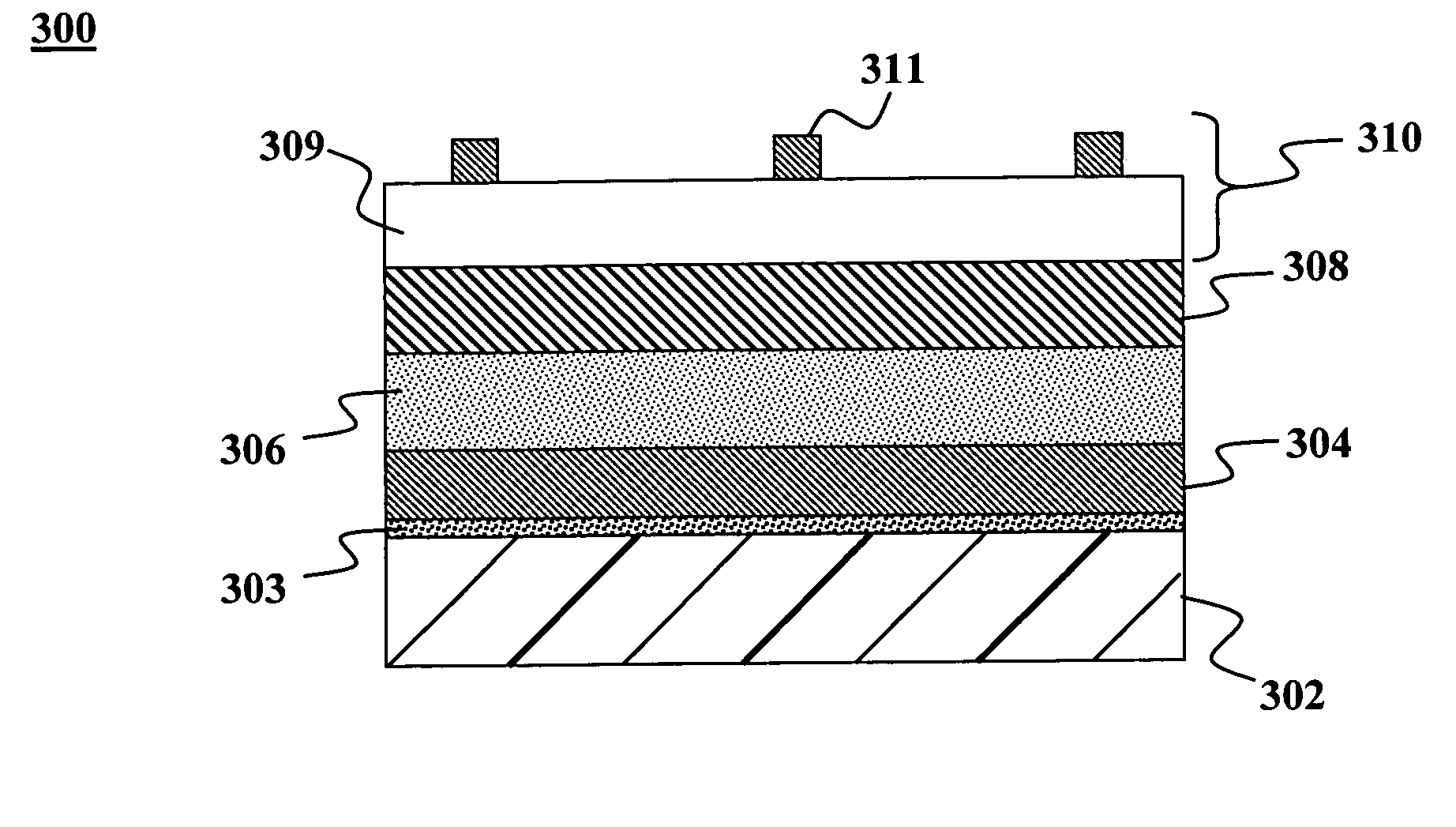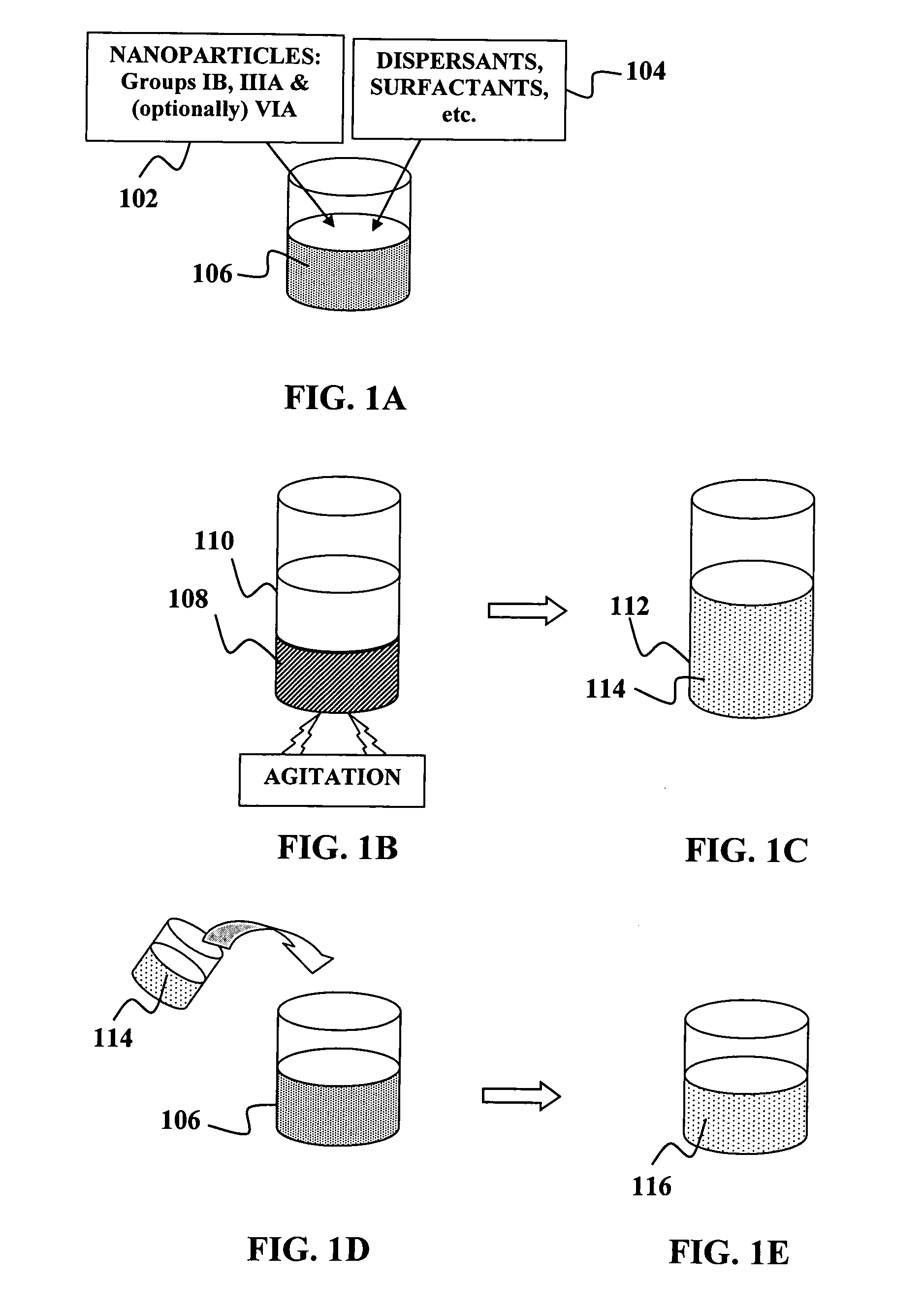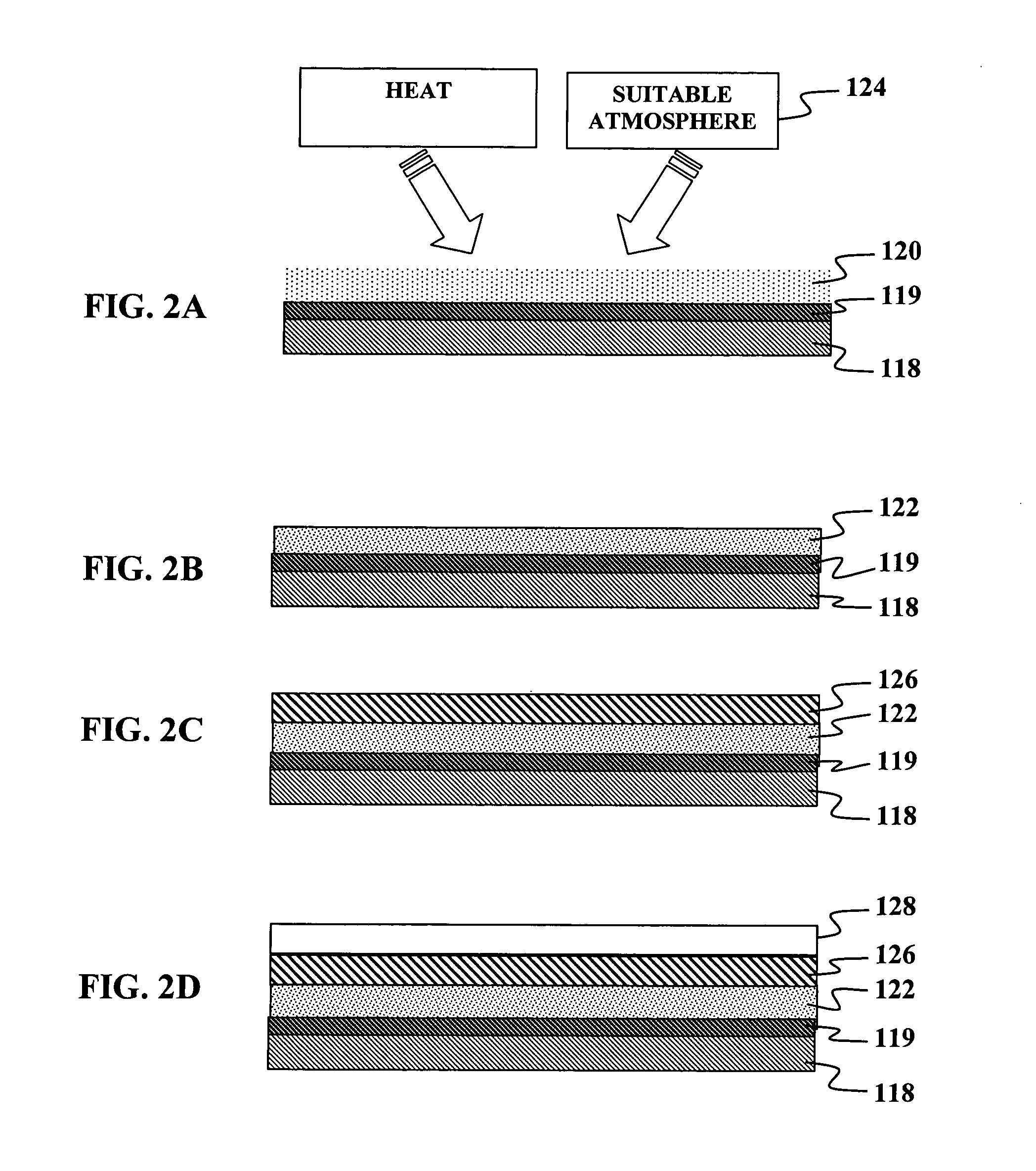Formation of compound film for photovoltaic device
a photovoltaic device and compound film technology, applied in the field of nanoparticle formation, can solve the problems of poor surface coverage, difficult to achieve precise stoichiometric composition over relatively large substrate area, and difficult to deposit compounds and/or alloys containing more than one elemen
- Summary
- Abstract
- Description
- Claims
- Application Information
AI Technical Summary
Problems solved by technology
Method used
Image
Examples
Embodiment Construction
[0027] Although the following detailed description contains many specific details for the purposes of illustration, anyone of ordinary skill in the art will appreciate that many variations and alterations to the following details are within the scope of the invention. Accordingly, the examples of embodiments of the invention described below are set forth without any loss of generality to, and without imposing limitations upon, the claimed invention.
[0028] According to embodiments of the present invention, a compound film for an active layer of a photovoltaic device may be formed in two or more sub-layers. A first sub-layer having a first component of the active layer may be formed on a substrate with a first process.
[0029] A second sub-layer including a second component of the active layer may then be formed using a second process such that the first sub-layer is disposed between the second sub-layer and the substrate. The second component has a different chemical and / or physical ...
PUM
| Property | Measurement | Unit |
|---|---|---|
| Temperature | aaaaa | aaaaa |
| Temperature | aaaaa | aaaaa |
| Fraction | aaaaa | aaaaa |
Abstract
Description
Claims
Application Information
 Login to View More
Login to View More - R&D
- Intellectual Property
- Life Sciences
- Materials
- Tech Scout
- Unparalleled Data Quality
- Higher Quality Content
- 60% Fewer Hallucinations
Browse by: Latest US Patents, China's latest patents, Technical Efficacy Thesaurus, Application Domain, Technology Topic, Popular Technical Reports.
© 2025 PatSnap. All rights reserved.Legal|Privacy policy|Modern Slavery Act Transparency Statement|Sitemap|About US| Contact US: help@patsnap.com



